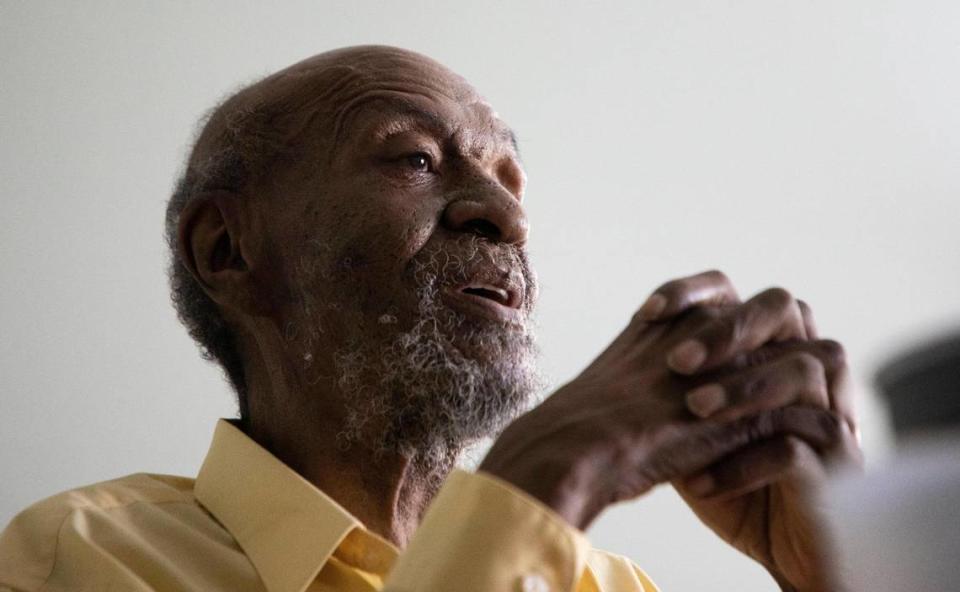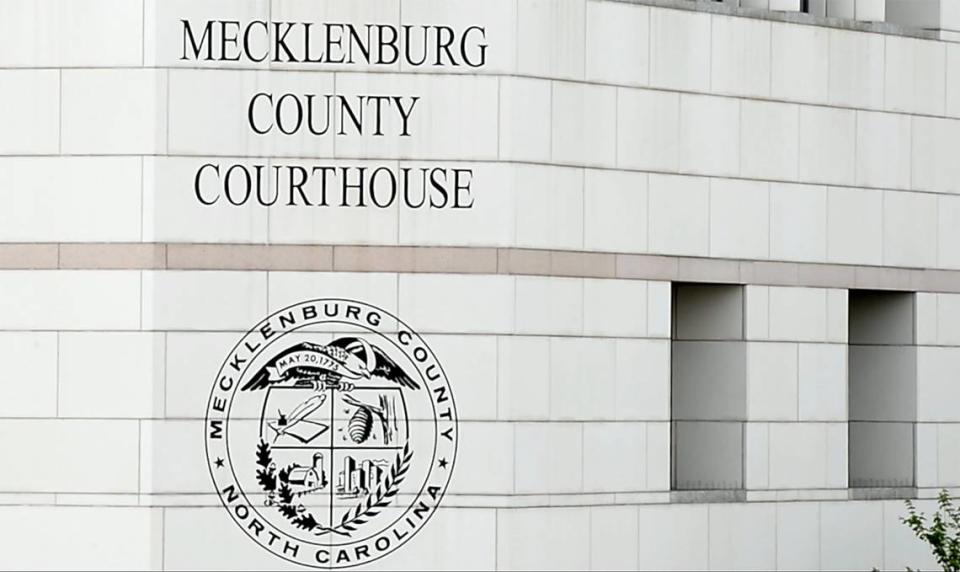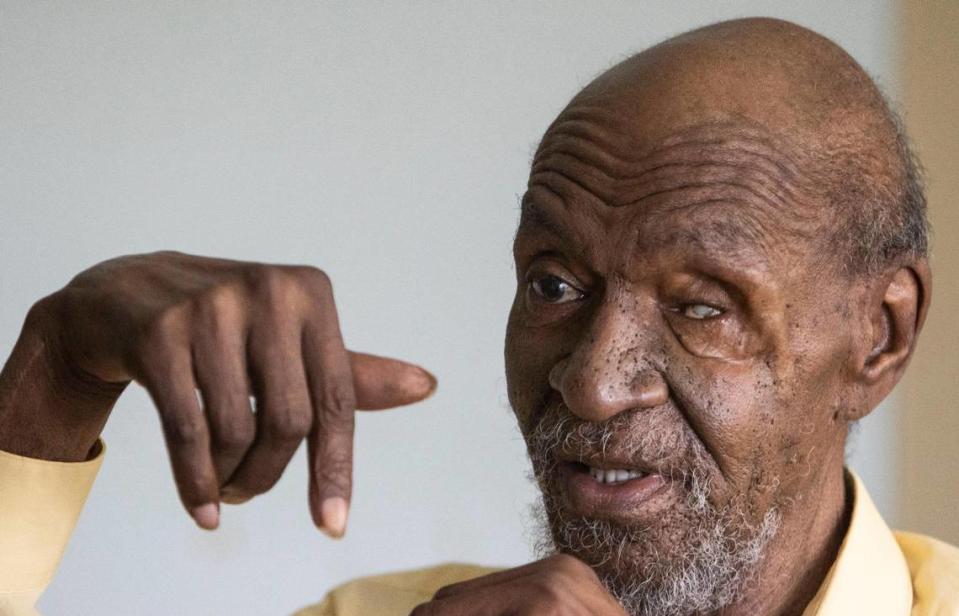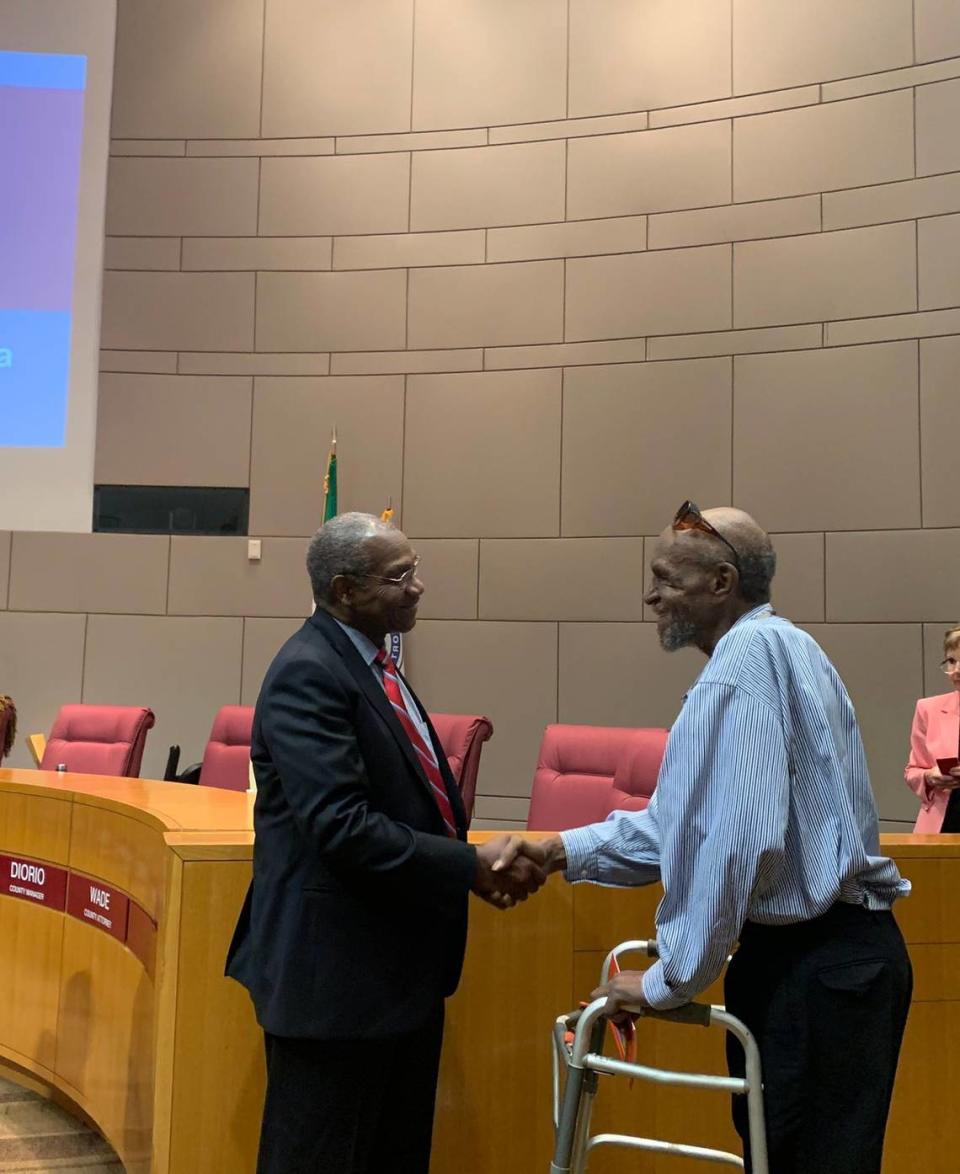He envisioned Mecklenberg’s future at 19. Now this Matthews artist earns its top honor.
At the uptown library in 1962, a 19-year-old flipped through a book when his eye caught two interesting words: hornet nests.
Though white Charlotte schools and certain lunch counters prohibited Harvey Boyd, he and his imagination ran free between the library’s quiet shelves.
He was researching for his next art project: the seal of Mecklenburg County.
At the time, Boyd worked as an advertisement designer for The Charlotte Observer. He loved working at the Observer because he was allowed — and expected — to read the paper on the job. Boyd recalls reading an article about Mecklenburg County looking for submissions for a new seal, and he had just the skill set.
He read about British General Charles Cornwallis’ journey through Mecklenburg during the American Revolution. Legend says the general referred to Charlotte as “a hornets nest of rebellion.” The historical connection became personal as he pictured the swarming insects from his childhood in Matthews.
“I’ve seen hornets, real life hornets. As a kid, we didn’t know what those things were,” Boyd said. “You can poke them and all of a sudden these things will come out and you got to run away.”
The hornets, like American revolutionaries in Charlotte, were determined to be free. Boyd knew he had to include it as one of the images in the seal.

Six decades later, he was inducted into the Order of the Hornet from the county his original design represents. Boyd’s seal, and elements from it, have become iconic representations of Mecklenburg, appearing on its courthouses, police stations and even the Charlotte NBA team mascot. For Boyd, the seal served as a springboard into a successful career as an artist and graphic designer, taking him around the globe.
“I have grandchildren now,” Boyd said. “I can say that’s what’s possible, now especially, since they know where I come from.”
Creating the Mecklenburg County seal

Established in 1972, the Order of the Hornet is the county’s highest honor, awarded to people who display valor or service to the residents of Mecklenburg County, Commissioner George Dunlap said. Dunlap chairs Mecklenburg Board of County Commissioners, which determines who is inducted.
With his drawing in county buildings, documents and logos across Mecklenburg, the commissioners unanimously determined Boyd’s art delivered a high order of service to local residents.
On the seal, a parchment and quill represent the Mecklenburg Declaration in the seal next to the hornet nest.
Below those images are two others that juxtapose each other. One is of a barn and silo, referencing Mecklenburg’s textile and rural history. The other is of a skyline of skyscrapers.
In 1962, Charlotte had no skyline for Boyd to reference. He used memories from taking the railroad his father helped build up the eastern seaboard to more dense, urban cities with tall buildings.
“That was my envisioning that one day we’ll have skyscrapers,” Boyd said.
The county selected Boyd’s drawing and he was given an award by then chamber president John Belk, according to Observer archives.
It was the only county award he received for it until this May when Dunlap and county commissioners shook his hand and thanked him for his work in the building embellished with his work.
He has the rights to sell the seal and hopes recent recognition from the county will help sell a book he wrote explaining its origins.
A start at CPCC and the Observer
Boyd doesn’t create as much today as his eyesight has gotten worse, but he’ll always be an artist.
He knew that since he was four years old and found solitude in drawing.
“That’s probably one of the best ways of being yourself,” Boyd said. “Your total concentration is focused on what you’re doing.”
The home he lives in now is the one he grew up in. His parents built it along the Matthews walking trail in 1944, the same year he was born. The attic is still packed with his childhood artwork.
He attended Matthews Colored School, J.H. Gunn and, ultimately, West Charlotte High School because it had an art program.
“Every morning I’d get up early and ride into downtown Charlotte and catch the bus over to West Charlotte,” Boyd said. “I wanted to be an artist.”
Growing up in the Jim Crow Era, he first experienced integration at Central Piedmont Community College as one of three Black students.
He doesn’t remember being afraid or intimidated in any of his art classes, even in the early 1960s.
“I’ve always found that artists have a unique understanding of humanity that maybe others do not share at that particular time,” Boyd said. “We shared and helped each other.”
He worked as an advertisement designer for the Observer at the same time.
Soon after beginning that job, he noticed all his coworkers ignored him at a certain time each day in the newsroom when they would go to get coffee, leaving him behind.
“I couldn’t go into those restaurants because they had signs that said ‘whites only.’ In doing that, it eliminated any African-American presence,” Boyd said. “It was not possible for me to go get coffee with them in the morning. I would have loved to have found out what they talked about. They came back happy and smiling.”
A career spanning the globe
His graphic design career took him to the Washington Post, where he designed ads for clients such as GM and Pillsbury. He watched journalists Bob Woodward and Carl Bernstein report on Watergate from his desk.
He worked for the U.S. State Department in Saudi Arabia from 1979 to 1982 where he recalled designing textbooks for the Saudi school system on behalf of the U.S. government. The nation was developing at that time as the U.S. assisted the country in bringing electricity into towns and villages.
When he left the U.S., he also left behind the days of creating cute renditions of the Pillsbury Doughboy for newspaper ads. His Middle Eastern days consisted of drawing hands screwing in light bulbs and other artwork that broke through a language barrier and taught Saudis about advancing technology.

“It had to be realistic enough for a normal person to understand what they’re doing,” Boyd said.
Some of his best memories are from Saudi Arabia. Having a quasi-diplomatic status as a state department employee, he sometimes found himself in rooms with members of the royal family.
“It blew my mind,” Boyd recalled. “You’re a prince, you’re a prince, you’re a prince. I would ask, ‘What do you do for a living?’ and they would say, ‘I don’t do nothing.’”
A rich history in Mecklenburg, Matthews
Though the Order of the Hornet recognized the artwork, Boyd and his family’s service to Mecklenburg went well beyond the county seal.
His great grandparents founded Mt. Moriah Missionary Baptist Church in the Crestdale community in Matthews, the historically Black area of Mecklenburg he returned home to and still resides in today.

Feeling fulfilled with his travel, work and art, he returned to Matthews in 1988.
“One day I said, ‘Hey, I’m getting older.’ I spent half my life making my life away from the place that I really enjoy,” Boyd said. “And I really enjoyed my parents.”
He made it home to see his mother turn 100.
When he was traveling Monroe Road in his hometown one day past woods, he had a flashback.
“As a child, I remembered it was where we would take people who died,” Boyd said. “We would take them by horse and buggy down Monroe Road.”
So Boyd and his friend took a machete to the trees and returned to the makeshift cemetery, discovering graves — marked and unmarked. The Roseland Cemetery, home to 75 former slaves, was designated a historic site in 2012.

He worked with Habitat for Humanity and assisted the building of more than 100 homes in the Crestdale community where he grew up.
“I started meeting people who had thoughts like, ‘Wow, let’s save the world. Let’s make the world a better place,’” Boyd said. “And they were doing it.”
Boyd’s art took him far beyond Mecklenburg County. The four-year-old who grew up in segregated Matthews with a passion for art went on to cross oceans and bump elbows with royalty.
As he approaches his eighth decade, Boyd knows his art brought him back to something even more important to him: home.
Those interested in Boyd’s work can visit bit.ly/harveyboydmeckcoseal.

 Yahoo Sports
Yahoo Sports 